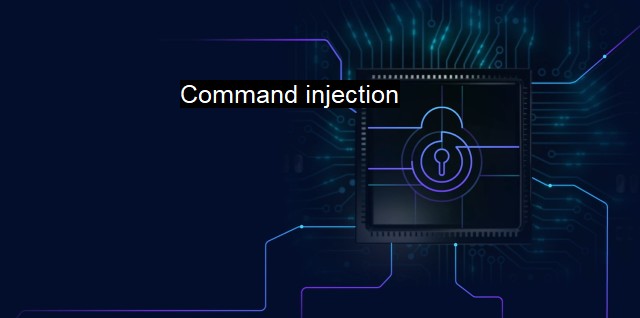What is Command injection?
Command Injection: Understanding the Techniques, Risks, and Mitigation Strategies For Cybersecurity in the Digital Age.
Command Injection is a form of security breach that creates avenues for wrongdoers to manipulate an application or system. It occurs when a hacker injects malicious commands into an existing system or application that allows system-level reliance on these inputs. This manipulation gives them control and often unbridled access to sensitive information such as confidential databases.In context of cybersecurity, Command Injection functions as a potent hacking technique that poses considerable risks. The hacker can take advantage of any functionality that directly uses input for system-level command execution. When a flawed application fails to properly validate these input commands, hackers can insert commands into the code, enabling their execution within the application's environment. This leads to major security threats allowing cyber attackers to escalate their privileges and carry out malicious activities.
Command Injection should be a serious concern for any party, particularly organizations, as it can negate their security measures and jeopardize their operations. The vulnerabilities can lead to significant data breaches, potentially exposing sensitive data such as customer information, trade secrets or assets. it gives cybercriminals opportunities to manipulate system files, change configurations, or intrude upon other system resources, allowing them to execute actions that damage or destabilize the system.
Hence, preventing and mitigating Command Injection makes a critical component of any cybersecurity defense strategy. One of the most prevalent techniques of preventing these vulnerabilities include input validation, which entails decoding any encoded user inputs, validating and limiting input types to ones strictly necessary for the system. Other methods include secure coding practices, which involves scrutinizing the attack surface during development and coding the application in such a way that the system does not rely on user input for its commands.
The role of antivirus in Command Injection is also crucial. it’s instructive to note that guarding solely against conventional threats would be inadequate for an antivirus software. Dedicated programs must incorporate sophisticated strategies finely-tuned for identifying Command Injection attempts and neutralizing them. This special awareness would means initiating extensive but necessary scans for unusual or damaging commands and eradicating them before they inflict harm on the system.
In the modern era, as more entities continue to fully integrate digital and networked systems into their operations, the risks of Command Injection loom large than ever before. Persistent mutation of such threats amplifies these risks, demanding ceaseless diligence from every stakeholder in data management. Techniques such as Command Injection have morphed over the years, rendering them more potent in the face of rudimentary security measures.
The rise of inter-connected systems and IoT (Internet of Things) devices has significantly increased the attack surface for these types of cybersecurity threats. A single Command Injection vulnerability in any constituent part of this interconnected ecosystem can bring down the entire infrastructure, causing serious security and financial implications.
Command Injection is a persistent cybersecurity threat. Yet, through diligence in coding, stringent input validations, robust antivirus systems in place, and an organization-wide culture of security, it is possible to stave off such threats. As digital landscapes continue to evolve with increasing complexities, responsively evolved solutions hold the key to making these rapid innovations cyber-secure. Thus, the methodology always circles back to continuous surveillance, swift action upon detection, and system readiness towards escalating cybersecurity threats – Command Injection being an unavoidable one.

Command injection FAQs
What is command injection in cybersecurity?
Command Injection is a type of vulnerability in which an attacker can execute arbitrary commands on a system, usually through a web application or other software that accepts user input. This can allow the attacker to gain unauthorized access to sensitive data or control over the system.How does command injection work?
Command Injection works by taking advantage of software that allows user input to be executed as part of a command. An attacker can enter malicious commands into the input field that are then executed by the software, giving them control over the system.What can be done to prevent command injection attacks?
Preventing command injection attacks involves careful programming practices, such as input validation and sanitization, as well as using secure coding practices and following best practices for secure software development. Additionally, using antivirus software and regularly updating systems and software can help prevent these attacks from occurring.What are the risks of a command injection attack?
The risks of a command injection attack include unauthorized access to sensitive data, theft of sensitive information like usernames and passwords, and even complete control over the system or network. These attacks can cause significant damage to a company or organization, both financially and in terms of reputation.| | A | | | B | | | C | | | D | | | E | | | F | | | G | | | H | | | I | | | J | | | K | | | L | | | M | |
| | N | | | O | | | P | | | Q | | | R | | | S | | | T | | | U | | | V | | | W | | | X | | | Y | | | Z | |
| | 1 | | | 2 | | | 3 | | | 4 | | | 7 | | | 8 | | |||||||